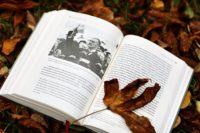
(listicle)
Literary journalism, often referred to as narrative journalism or creative nonfiction, blends the artistry of storytelling with the rigor of journalism to create compelling narratives rooted in real-life events. As far as I understood, this genre offers content writers a wonderful platform to explore and expose complex truths about the world around us. Whether you’re a young journalist or an aspiring writer dipping his or her nose into this riveting realm, here are some tips to help you navigate the intricacies of literary journalism:
Choose Your Subject Wisely: The essence of literary journalism lies in its ability to tell captivating stories about real people and events. When selecting a subject, opt for stories that resonate with you personally and have the potential to captivate your audience. Look for narratives with depth, complexity, and universal themes that offer insights into the human experience.
Research, Research, Research: Before diving into writing, immerse yourself in thorough research. Gather as much information as possible about your subject through interviews, firsthand accounts, archival research, and on-the-ground reporting.
Embrace Narrative Techniques: Unlike traditional journalism, literary journalism allows for the use of narrative techniques such as scene-setting, character development, dialogue, stylistic figures, and vivid description. Incorporate these elements to bring your story to life and engage your readers on a deeper emotional level.
Maintain Ethical Integrity: While literary journalism offers creative freedom, it’s essential to uphold the principles of accuracy, fairness, and integrity. Fact-check your sources, verify information, and be transparent about any narrative liberties or composite characters. Respect the privacy and dignity of your subjects, and seek their consent when necessary.
Find Your Voice: Literary journalism is as much about the writer’s voice as it is about the story itself. Develop a distinctive voice that reflects your personality, perspective, and style.
Craft Compelling Structures: Structure plays a crucial role in shaping the narrative arc of your story. Experiment with different narrative structures such as chronological, thematic, or nonlinear storytelling to create tension, suspense, and resonance. Pay attention to pacing, rhythm, and flow to keep your readers engaged from start to finish.
Stay True to the Story: While literary journalism allows for creative interpretation, it’s essential to stay true to the essence of the story and the experiences of your subjects. Avoid sensationalism, exaggeration, or manipulation for the sake of drama. Let the facts and emotions speak for themselves, allowing your readers to form their own interpretations and connections.
In conclusion, I would like to underline that the literary journalism genre is used by BBC and CNN journalists, Newsweek and the New York Times staff writers. It offers all of us a powerful platform to write journalistic articles resembling fabulous fiction stories with narratives rooted in real-life events. By embracing the tips outlined above—choosing subjects wisely, conducting thorough research, employing narrative techniques, maintaining ethical integrity, finding your voice, crafting compelling structures, editing ruthlessly, staying true to the story, reading widely, and persisting with perseverance—you can embark on a rewarding journey of storytelling that resonates with readers and illuminates the world around us.


























































Залишити відповідь